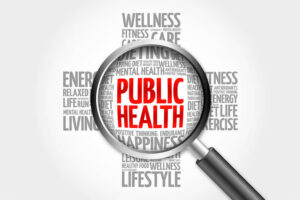Background: The long-term pulmonary function and related physiological characteristics of COVID-19 survivors have not been studied in depth, thus many aspects are not understood.
Methods: COVID-19 survivors were recruited for high resolution computed tomography (HRCT) of the thorax, lung function and serum levels of SARS-CoV-2 IgG antibody tests 3 months after discharge. The relationship between the clinical characteristics and the pulmonary function or CT scores were investigated.
Findings: Fifty-five recovered patients participated in this study. SARS-CoV-2 infection related symptoms were detected in 35 of them and different degrees of radiological abnormalities were detected in 39 patients. Urea nitrogen concentration at admission was associated with the presence of CT abnormalities (P = 0.046, OR 7.149, 95% CI 1.038 to 49.216). Lung function abnormalities were detected in 14 patients and the measurement of D-dimer levels at admission may be useful for prediction of impaired diffusion defect (P = 0.031, OR 1.066, 95% CI 1.006 to 1.129). Of all the subjects, 47 of 55 patients tested positive for SARS-CoV-2 IgG in serum, among which the generation of Immunoglobulin G (IgG) antibody in female patients was stronger than male patients in infection rehabilitation phase.
Interpretation: Radiological and physiological abnormalities were still found in a considerable proportion of COVID-19 survivors without critical cases 3 months after discharge. Higher level of D-dimer on admission could effectively predict impaired DLCO after 3 months discharge. It is necessary to follow up the COVID-19 patients to appropriately manage any persistent or emerging long-term sequelae.

- Society

Membership
Support our mission by becoming a member

Public Health Policy Center
Explore the society's public health initiatives

Meet the community
See what our members have been working on
- Journal
- Author Center
- Membership